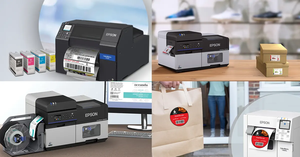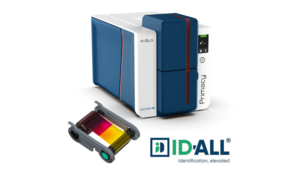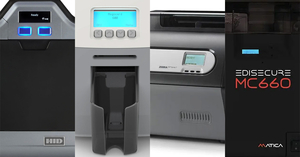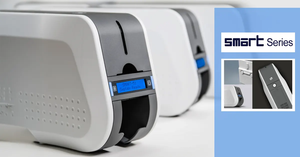The Different Types of ID Cards
The purpose of this post is to inform the reader of the various types of ID cards that exist out there in the printing world. My hope is to present a brief, but high quality, catalogue of the different ID cards as well as an explanation of what the cards are typically used for. Many of the types of cards explained here in overlap to some degree. For example, one type of card might be a general category of card, while several others are types of that card that belong in that general category.
Proximity Cards
You’ve probably heard this term a whole lot, but don’t know exactly what it is. The term refers to an integrated circuit apparatus used for a variety of basic uses such as security access control and payment systems. The two main types of proximity cards come in the 125 kHz devices or the newer 13.56 MHz variety. These cards are often referred to as RFID cards, or Radio-frequency Identification Cards, but are also known by the term “contactless smartcards.”
Access Control
An Access Control card is designed to grant access to an enclosed area, be it a business office, airport, or government-type organization. Access Control is a general category, and access control cards can take the form of proximity cards and come with the option of displaying a photo of the card holder. Access control cards typically contain magnetic chips that grant the user access.
Clamshell Card
A Clamshell Card is a protective covering used to house a contactless smartcard.
Flexpass Imageable Cards
Flexpass Imageable cards are particularly useful for barcode transactions or those which require magnetic stripes and a dye-sublimation printer can be used to print digital images and graphics onto their surface.
Embeddable Cards
An embeddable card, sometimes also known as embedded cards, is an RFID card embedded with a chip. The card can be used for access control, purchases and cash withdrawal and this type of card has been in use for several years.
Hologram card
An ID card with a built-in hologram, an added security measure from counterfeiting.
iClass Key
The “key” in iClass Key refers to a small contactless smartcard placed in an also-small plastic knob. It serves the same purpose as most access proximity cards as long as the function does not require you to present a photo ID. Some of the plusses of this technology is that it protects your card from the elements and can be easily carried on a key chain or some similar accessory.
iClass Tag
The “tag” in iClass Tag is a contactless smartcard device roughly the size of a coin and is a transponder that you can attach to a non-metallic surface.
ISO/IEC 14443
The international standard that defines ID proximity cards and its communications transmission protocols.
Mifare Card
A patented contactless smart card standard corresponding to ISO 14443.
SDK (Software Development Kit)
An SDK is a software development kit that is used to create applications for software packages and other platforms.
Wiegand Cards
A Wiegand card utilizes embedded ferromagnetic wires, ferromagnetism being the mechanism that causes materials to be permanently magnetized, even after the energy field is removed. These wires are turned away in a strategic fashion as to generate the user’s individual ID number.
Contact
us at IDSecurityOnline today at
(800) 897 7024.









